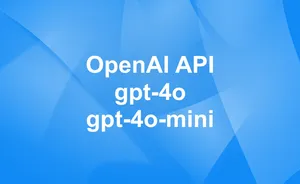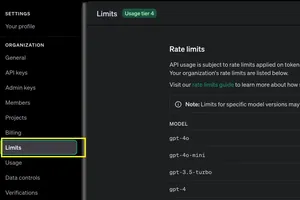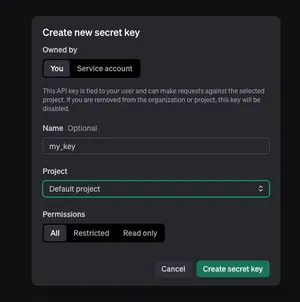Overview
n8n is a workflow automation tool often used to orchestrate AI inference, data enrichment, and ops tasks. This guide compares n8n Cloud vs self-hosting for AI Engineering use cases (including private models and internal data), and shows how to get started quickly.
TL;DR: When to pick which
| You need… | Choose Cloud | Choose Self-host |
|---|---|---|
| Fast setup, no ops | ✓ | |
| Full control over infra, VPC, air‑gapped | ✓ | |
| Strict data residency | ✓ | |
| Custom/community nodes without restriction | ✓ | |
| Managed updates/backups | ✓ | |
| Predictable monthly cost | ✓ | |
| Lowest unit cost at scale | ✓ | |
| Private LLM, on‑prem vector DB, internal APIs | ✓ | |
| Minimal vendor lock‑in | ✓ |
General rule: Start with Cloud to validate value quickly. Move to self-host when you need deeper control, privacy, or specialized scaling.
Feature comparison (AI-focused)
- Hosting and ops: Cloud is managed; self-host needs Docker/Kubernetes and your monitoring, backups, and updates.
- Data control: Self-host keeps all execution data, logs, and credentials in your environment; easier to meet residency needs.
- Connectivity: Self-host can reach private subnets and on‑prem services without exposing them; Cloud needs public ingress or secure tunnels.
- Extensibility: Both support nodes; self-host makes it easier to install custom/community nodes and native OS dependencies.
- Scaling: Cloud scales within plan limits. Self-host can scale horizontally (queue mode with Redis + multiple workers).
- Cost: Cloud = subscription per workspace/usage. Self-host = infra + ops time; cheaper per execution at high volume.
Quickstart
n8n Cloud
- Create a workspace and sign in.
- Add credentials for any external APIs you’ll call (e.g., OpenAI, Slack).
- Build a workflow with a Webhook (or Schedule) trigger.
- Test your webhook URL from curl or a tool; publish when ready.
n8n Self-host (Docker Compose)
- Provision a VM or server with Docker and Docker Compose.
- Create a docker-compose.yml with n8n and Postgres (for persistence).
- Set environment variables (host, SSL, credentials encryption key).
- Bring up the stack and visit the UI.
Minimal compose file:
version: "3.9"
services:
postgres:
image: postgres:15
environment:
POSTGRES_USER: n8n
POSTGRES_PASSWORD: n8n
POSTGRES_DB: n8n
volumes:
- n8n-db:/var/lib/postgresql/data
n8n:
image: n8nio/n8n:latest
ports:
- "5678:5678"
environment:
N8N_HOST: localhost
N8N_PORT: 5678
N8N_PROTOCOL: http
DB_TYPE: postgresdb
DB_POSTGRESDB_HOST: postgres
DB_POSTGRESDB_DATABASE: n8n
DB_POSTGRESDB_USER: n8n
DB_POSTGRESDB_PASSWORD: n8n
N8N_ENCRYPTION_KEY: "replace-with-32+chars-random-key"
GENERIC_TIMEZONE: UTC
depends_on:
- postgres
volumes:
- n8n-data:/home/node/.n8n
volumes:
n8n-db:
n8n-data:
Start it:
docker compose up -d
Open http://localhost:5678 to finish setup.
Minimal working example: Webhook → local LLM (Ollama) → Response
This example accepts a prompt, calls a local LLM (Ollama at http://localhost:11434), and returns the model’s text. Import the workflow JSON below into n8n.
Assumptions:
- You have Ollama running:
ollama run llama3 - n8n is reachable at http://localhost:5678
Workflow JSON:
{
"name": "AI Webhook to Ollama",
"nodes": [
{
"parameters": {
"path": "ai/complete",
"methods": ["POST"],
"responseMode": "responseNode"
},
"type": "n8n-nodes-base.webhook",
"typeVersion": 1,
"position": [200, 300],
"name": "Webhook"
},
{
"parameters": {
"url": "http://host.docker.internal:11434/api/generate",
"method": "POST",
"jsonParameters": true,
"options": {
"timeout": 90000
},
"bodyParametersJson": "={\n \"model\": \"llama3\",\n \"prompt\": $json.prompt,\n \"stream\": false\n}"
},
"type": "n8n-nodes-base.httpRequest",
"typeVersion": 3,
"position": [500, 300],
"name": "HTTP Request"
},
{
"parameters": {
"responseBody": "={{$json.response}}",
"responseCode": 200
},
"type": "n8n-nodes-base.respondToWebhook",
"typeVersion": 1,
"position": [800, 300],
"name": "Respond"
}
],
"connections": {
"Webhook": {"main": [[{"node": "HTTP Request", "type": "main", "index": 0}]]},
"HTTP Request": {"main": [[{"node": "Respond", "type": "main", "index": 0}]]}
}
}
Test it:
curl -X POST http://localhost:5678/webhook/ai/complete \
-H 'Content-Type: application/json' \
-d '{"prompt":"Write a short haiku about n8n."}'
Notes:
- On Linux, replace host.docker.internal with your host IP.
- If using Cloud, replace the HTTP Request URL with a public LLM endpoint or a secure tunnel to your network.
Operational pitfalls to avoid
- Webhooks and SSL
- Cloud provides a public URL; for self-host, put n8n behind a reverse proxy (TLS), and set N8N_HOST/N8N_PROTOCOL correctly.
- Persistence
- Use Postgres (or MySQL) and persistent volumes. SQLite in ephemeral containers can lose data.
- Large payloads/binaries
- Configure binary data mode and storage location. Reverse proxies may need increased body size limits.
- Secrets management
- Always set N8N_ENCRYPTION_KEY. Scope API keys to minimum permissions. Consider external secret stores for self-host.
- Scaling workers
- For high throughput, enable queue mode with Redis and run separate workers. Don’t put heavy work on the main process.
- Timeouts and retries
- Tune node timeouts and retry settings, especially for LLM or vector DB calls that can be slow.
- Upgrades
- Cloud auto-updates. For self-host, test upgrades in staging; breaking changes can affect nodes or credentials.
Performance notes (AI workloads)
- Use queue mode for concurrency: set EXECUTIONS_MODE=queue, add Redis, start multiple workers. Scale workers horizontally.
- Keep main instance light: use it for scheduling/webhooks; push heavy jobs to workers.
- Tune concurrency: N8N_WORKER_CONCURRENCY and external service limits (e.g., LLM rate limits) should align.
- Batch where possible: pre-chunk prompts or documents to reduce per-item overhead.
- Avoid large inline JSON: store big artifacts in object storage and pass references.
- Short-circuit webhooks: use Respond to Webhook early, process async, then notify if needed.
- Observability: capture latency, error rate, token usage, and queue depth to spot bottlenecks.
Cost considerations
- Cloud: Simpler budgeting; you trade higher unit cost for zero ops.
- Self-host: Lower unit cost at scale, but factor in engineering time, monitoring, backups, and security hardening.
Compliance and licensing
- n8n is source-available; self-hosting is permitted. If you redistribute or build a competing hosted service, review the license terms.
- For regulated workloads, self-host simplifies data residency and private-network access; Cloud shifts some controls to the provider, but you still own data classification and usage policies.
Decision checklist
- Do you need private LLMs or internal databases? → Self-host.
- Is rapid validation more important than control? → Cloud.
- Expecting unpredictable spikes? → Self-host with queue workers.
- Limited ops bandwidth? → Cloud.
FAQ
Can I start on Cloud and migrate to self-host later? Yes. Export workflows/credentials (rotate secrets) and reconfigure endpoints. Test webhooks and queues in staging.
Can I call local LLMs from Cloud? Only if they’re reachable from the internet (or via a secure tunnel). Otherwise self-host.
Do community/custom nodes work on Cloud? Many do, but self-host offers maximum flexibility and OS-level dependencies.
How do I scale for heavy AI jobs? Use Redis queue mode, multiple workers, and early webhook responses; keep main instance thin.
What database should I use? Postgres is the common choice for reliability and performance.







